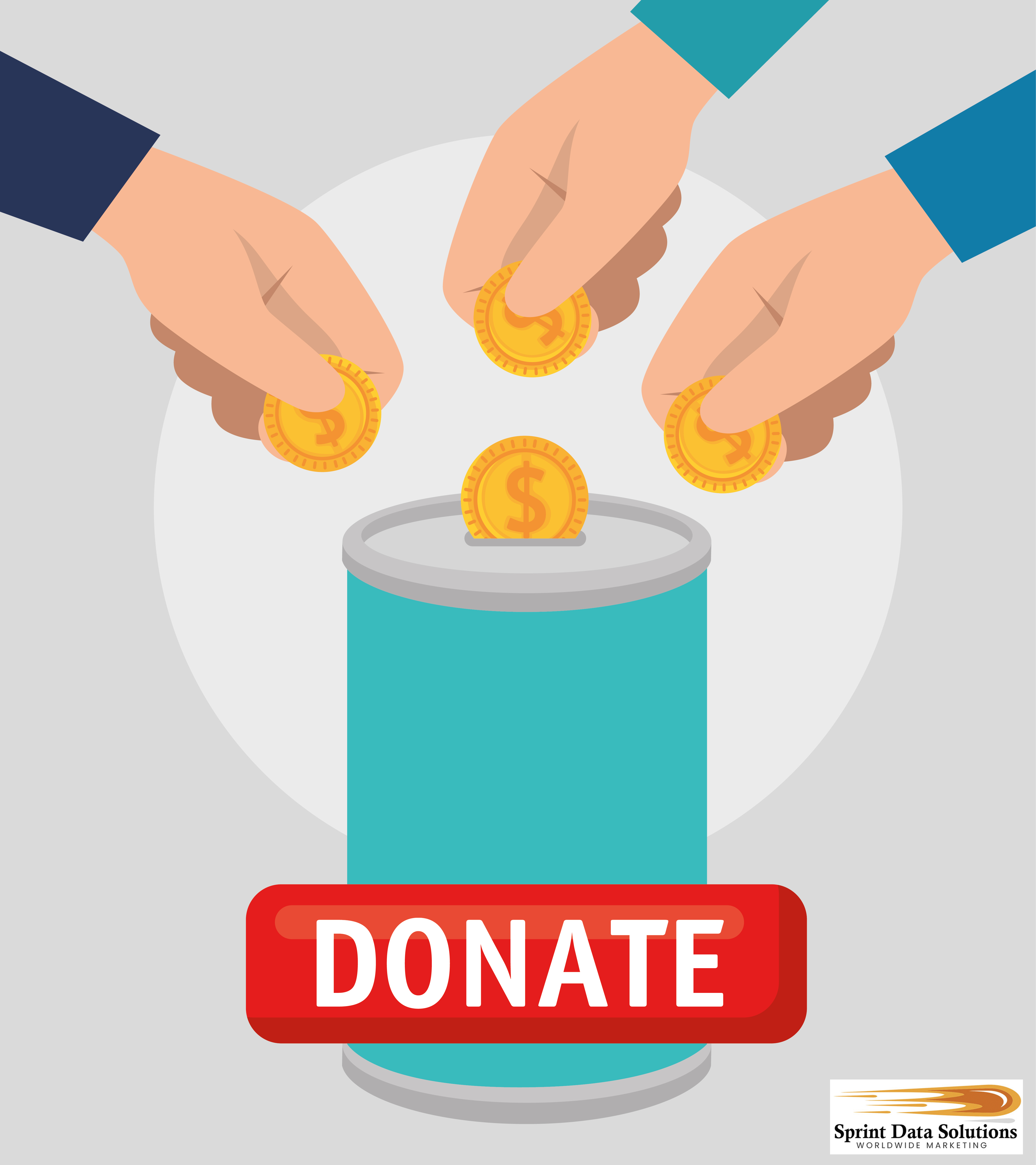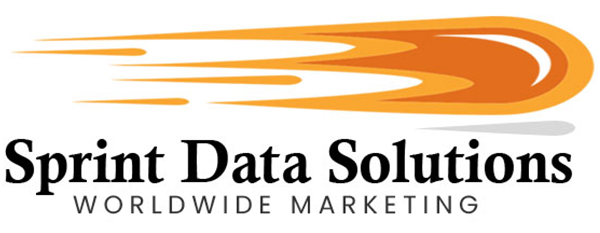The Best Way To Get The Most Donations Is To Find The Right Donors
One of the enduring realities of human society is that not every organized initiative is designed to generate profit. In fact, many efforts are built on a foundation of altruism, where the goal is not financial gain but the improvement of lives and conditions for others. Charitable organizations epitomize this ethos, functioning as highly coordinated, mission-driven entities focused on causes such as rescuing animals, supporting the homeless, advancing education for underprivileged children, combating disease, or responding to humanitarian crises. These organizations often operate on the front lines of social good, serving as essential lifelines in communities around the world.
However, while their objectives may be noble and selfless, these organizations are not immune to the realities of economics. Every initiative—no matter how charitable—requires some level of funding to remain operational. Infrastructure, staffing, outreach, supplies, and administrative logistics all incur costs. Unlike for-profit businesses, which sustain themselves through revenue from products or services, nonprofits must rely on alternative funding sources. Chief among these is public and private donations. These contributions, whether from individuals, corporate sponsors, or philanthropic foundations, are the fuel that powers these impactful missions. Without a consistent inflow of financial support, even the most visionary charitable work can struggle to survive, let alone scale. Thus, while the primary focus of these organizations is compassion, they are inextricably linked to the practical necessity of sustained funding—making donations not just helpful, but essential.

A Spectrum Of Worthy Causes
Charitable organizations in the United States play a pivotal role in supporting a wide array of causes, reflecting the diverse needs and values of American society. From healthcare and education to environmental conservation and community development, there are countless avenues where donations can create a lasting impact. While individual contributions—even modest ones—can collectively drive significant change, philanthropic support isn’t limited to everyday citizens. Many corporations and affluent individuals routinely allocate portions of their income or profits to further causes they care about, leveraging their wealth for the greater good. Recognizing the importance of connecting donors with meaningful opportunities, Sprint Data Solutions Worldwide Marketing offers a robust and comprehensive database of donors segmented by interest and cause. This strategic resource empowers nonprofits, fundraising teams, and advocacy groups to target their outreach efforts more effectively, ensuring that campaigns resonate with those most likely to contribute.
Donor Mailing Lists
If you’re looking to identify individuals or businesses that have contributed to various causes, there exists an extensive and comprehensive database of donors spanning the entire United States. This list includes contributors from all walks of life—ranging from small individual donors to large-scale corporate philanthropists—covering virtually every cause imaginable, from humanitarian aid and education to environmental initiatives and political campaigns. Because donor activity is so widespread across the country, the key to effective targeting lies in the ability to filter this data based on specific criteria such as geographic location, income bracket, donation history, or other demographic factors. With the right tools and segmentation strategies, it’s entirely possible to refine a vast dataset into a focused, actionable list of potential supporters aligned with your specific goals.
Food Bank Donors
While every American aspires to maintain a stable income that can reliably support basic needs—especially when providing for a family—reality doesn’t always align with that goal. Economic hardships such as layoffs, natural disasters, medical emergencies, or other personal crises can suddenly disrupt financial stability and make securing even daily meals a daunting challenge. In such times, the simple act of putting food on the table becomes an overwhelming struggle.
Fortunately, many individuals are driven by compassion and a sense of community to support those experiencing food insecurity. Whether through financial contributions or by donating non-perishable food items, countless people take active steps to help their neighbors in need. Across the country, food banks and community pantries operate as critical safety nets, ensuring that families facing hunger have somewhere to turn. These organizations are typically found in major urban areas and increasingly in suburban and rural regions, giving donors the flexibility to choose a local cause or a broader initiative that aligns with their values. The ongoing efforts of volunteers and contributors make a meaningful difference in the lives of those for whom the next meal is far from guaranteed.
Homeless Shelter Donors
Homelessness continues to be a critical issue in many major urban centers across the United States. This problem becomes especially dire during extreme weather conditions, such as the freezing temperatures of winter or the scorching heat of summer. During these periods, individuals experiencing homelessness are at heightened risk for serious health complications, including frostbite, hypothermia, heatstroke, and in the most severe cases, even death. These environmental threats highlight the urgent need for immediate shelter and long-term solutions.
People may become homeless for a multitude of reasons. Some flee abusive or dangerous domestic environments, while others may suffer from untreated or inadequately addressed mental health disorders, such as depression, PTSD, or schizophrenia. Financial instability remains one of the leading causes, particularly as rising housing costs outpace wage growth, pushing many to the brink of eviction or foreclosure. Job loss, medical emergencies, or a lack of social support can further exacerbate these vulnerabilities, leading individuals or families into homelessness almost overnight.
Homelessness is not confined to large cities; it affects communities of all sizes across the country. Fortunately, various organizations and local governments have established shelters to offer temporary refuge, warmth, and safety. Many of these facilities go beyond just providing a bed—they also offer meals, healthcare referrals, counseling services, job training programs, and pathways to permanent housing. These efforts are often supported by concerned citizens who donate money, clothing, or food, and by volunteers who contribute their time and energy to improve the lives of those in need.
Tackling homelessness requires a multi-faceted approach that includes affordable housing initiatives, mental health care accessibility, addiction treatment programs, and strong community outreach. It’s a complex issue, but with collective action and compassion, it is possible to restore hope and dignity to those without a home.
Animal Abuse Donors
Many Americans share a deep affection for animals and consider pets like dogs, cats, and other companions as cherished members of their families. Even among those who may not identify as passionate animal lovers, there is generally a strong cultural sentiment of kindness and empathy toward animals. As a result, when the public is made aware of animal cruelty—especially cases involving abuse or neglect—the emotional response is often intense and immediate. This widespread compassion helps explain why campaigns supporting animal rescue shelters, rehabilitation centers, and cruelty prevention organizations often receive generous donations and strong volunteer support.
For pet owners, witnessing or hearing about abuse toward animals is not just upsetting—it often feels as distressing as stories of mistreatment toward children or spouses. Pets are seen as innocent, loyal companions that depend entirely on humans for safety and care, which amplifies the emotional impact when that trust is betrayed. Consequently, many Americans are not only willing to donate financially to help animal welfare causes, but they are also moved to take action by volunteering their time, offering foster homes, or advocating for stricter animal protection laws. This widespread concern reflects the high value placed on compassion, justice, and the humane treatment of all living beings.

Women’s Shelter Donors
While the United States continues to aspire toward the ideal of equality, the reality is that many systemic issues remain unresolved—especially when it comes to gender-based violence. Despite legislative progress and increased public awareness, women are still disproportionately affected by abuse. Statistics consistently show that women make up the vast majority of victims in domestic violence cases, and for many, the grim choice is between remaining in a dangerous environment or attempting to escape without knowing where they’ll end up. The act of leaving is often just the beginning of another struggle—finding a place to stay, staying hidden from their abuser, and regaining emotional and financial stability.
Emergency Disaster Donors
Natural disasters strike without warning and often leave devastation in their wake. Across the United States, no region is immune—from the relentless wildfires that have become all too common in California, to the powerful hurricanes that batter the Gulf Coast, especially in Florida. These catastrophic events disrupt lives in an instant, forcing families to flee their homes with little more than the clothes on their backs. Entire communities can be upended, with infrastructure destroyed, homes reduced to rubble, and livelihoods wiped out overnight.
In the aftermath, many victims find themselves without shelter, possessions, or access to basic necessities—not because of personal failings or poor decisions, but because nature has indiscriminately altered the course of their lives. It’s important to understand that homelessness in these situations is not a reflection of character or effort; it is a temporary but profound hardship imposed by forces beyond anyone’s control. The scale of displacement during such disasters presents a massive challenge for emergency response systems, which often struggle to meet the sudden, widespread need for housing, food, water, medical care, and emotional support.
Fortunately, the resilience of the American spirit often shines brightest during these darkest moments. Citizens from unaffected areas routinely step up to help, motivated by compassion and solidarity. Individuals, families, organizations, and businesses mobilize to provide financial assistance, donate essential supplies, and offer their time and labor. Whether it’s assembling care packages, organizing fundraisers, or traveling to affected zones to assist with cleanup and rebuilding efforts, countless Americans respond with generosity and resolve. These collective efforts not only provide immediate relief but also foster a sense of unity and hope that carries communities through the long road to recovery.
Corporate Donors
It’s not just private individuals who contribute to charitable causes—corporate entities also play a significant role in philanthropy, often motivated by both altruism and strategic benefits. Like high-net-worth individuals, corporations can reap tax advantages from charitable giving, making it an appealing aspect of corporate financial planning. More importantly, businesses are increasingly aware of the value of corporate social responsibility (CSR) in strengthening their brand reputation, engaging customers, and improving employee satisfaction. For these reasons, corporations represent a promising avenue for securing larger-scale and potentially recurring contributions.
Beyond monetary donations, the intrinsic value of in-kind support or services can sometimes surpass the impact of a simple financial contribution. Corporations are uniquely positioned to offer critical resources aligned with their core competencies—resources that can meet urgent needs more efficiently than cash alone. For instance, in the wake of a natural disaster like a hurricane, companies in the food, beverage, logistics, or communications industries can donate essential supplies, transportation support, or connectivity solutions. Such targeted assistance directly addresses specific community needs and demonstrates a responsive, purpose-driven corporate ethos. As a result, engaging with companies as philanthropic partners can lead to high-impact, multifaceted support that benefits both the community and the contributing business.
Medical Donors
Medical treatment remains a critical area of need for countless Americans facing challenging circumstances. For many individuals, life-saving procedures and essential healthcare services are financially out of reach. Some may suffer from debilitating conditions—like impaired mobility due to a damaged limb—that could be greatly improved with surgery, yet lack the funds to proceed. Others are suddenly thrust into crisis by unexpected events, such as car accidents or natural disasters, leaving them or their loved ones in urgent need of costly medical attention with no financial support in sight.
Fortunately, the compassion of donors has consistently proven to be a powerful force in bridging these healthcare gaps. Many Americans are eager to support efforts that restore health, dignity, and quality of life. The field of medical donations is broad and diverse. Some donors choose to support large-scale research organizations working to develop treatments and find cures for devastating diseases like cancer, Alzheimer’s, or ALS. These contributions fuel innovation and help bring hope to millions through advancements in medicine and technology. Others prefer a more personal impact, choosing to donate directly to individuals via crowdfunding platforms or charitable organizations that vet and highlight urgent medical needs.
This range of options allows donors to align their giving with their values—whether it’s contributing to the future of global health or making an immediate difference in someone’s life today. Regardless of the approach, every donation plays a vital role in improving health outcomes and providing a lifeline to those in dire medical need.
Special Issues Donors
There are instances when the need for donations is tied not to immediate disasters but to timely, emotionally charged issues or enduring social causes. For example, when children are trapped in a collapsed structure or a dangerous environment, rescue operations may require specialized equipment and trained personnel. These missions, often urgent and complex, demand financial resources—not only for gear and logistics but also to sustain rescue crews working around the clock. In such cases, public donations can make the difference between life and death.
Beyond emergencies, many long-term initiatives consistently rely on community support. Civil rights campaigns, for instance, frequently seek funding when societal tensions flare up over issues of race, religion, gender, or sexual orientation. Legal battles, awareness efforts, and community support programs all hinge on the ability to mobilize financial backing swiftly. Similarly, causes like pro-life and pro-choice advocacy, or debates around gun control legislation, continue to attract supporters on both sides. These movements often require steady funding to maintain their operations, conduct public outreach, and influence policy through lobbying and education. In each of these situations, public donations serve as a crucial engine powering both immediate action and sustained advocacy.
Veteran Donors
Many Americans hold deep respect and admiration for the military veterans who have bravely risked their lives in defense of the nation. However, despite their immense sacrifices, these heroes are not always treated with the dignity and support they rightfully deserve upon returning to civilian life. For many, the transition back home is far from easy—haunted by the psychological scars of war, they often grapple with post-traumatic stress disorder (PTSD), anxiety, depression, and other service-related injuries. Beyond mental health struggles, veterans may also face challenges securing stable employment, accessing adequate healthcare, or reintegrating into their communities. Unfortunately, the support systems in place can sometimes fall short, leaving these individuals feeling abandoned by the very country they served. Yet, amidst these hardships, there is hope: countless Americans recognize the debt owed to our veterans and step up to help. Through charitable donations, volunteer efforts, and advocacy, these citizens ensure that those who defended our freedoms are not left behind, but are instead given the opportunity, care, and resources they need to reclaim a fulfilling and meaningful civilian life.
COVID-19 Donors
The COVID-19 pandemic has brought about a dramatic shift in the way societies function, profoundly impacting how businesses operate and how individuals live and work. While the brunt of the crisis appears to have subsided, the effects are far from over. Over one million Americans have tragically lost their lives to the virus, a staggering loss that continues to reverberate through communities and families. However, beyond the immediate fatalities, a growing number of COVID-19 survivors are facing a new, lingering health crisis known as “Long COVID.” This condition is characterized by persistent and often debilitating symptoms such as chronic fatigue, difficulty breathing, chest pain, joint aches, and cognitive impairments like “brain fog”—a state of mental confusion and memory issues that impairs concentration and clarity of thought.
These symptoms are not merely inconvenient; for many, they are life-altering. Individuals who once led active, healthy lives may now find themselves unable to maintain employment or manage daily tasks without assistance. This has added a significant new demographic to the population of people with disabilities, often without the same infrastructure or support systems in place. As a result, countless individuals who were previously self-sufficient are now in need of long-term care, income support, and accommodations in both public and professional spheres. The pandemic has, therefore, not only reshaped the physical and economic health of nations but has also posed a long-term challenge to healthcare systems, workplace policies, and social safety nets, calling for sustained attention and innovative solutions.
Paralysis Donors
In the United States, many individuals experience a loss of full mobility due to a variety of causes, including congenital conditions, illnesses developed over time, or traumatic injuries. This loss of mobility can vary significantly in severity. Some people suffer from partial paralysis, which may affect specific areas like fingers or toes, making everyday tasks difficult or impossible. More severe cases involve total paralysis, where individuals lose voluntary control over large sections of the body. Paraplegia is a condition where paralysis affects the lower half of the body, typically requiring the use of a wheelchair for mobility. Even more debilitating is quadriplegia, where paralysis extends from the neck downward, leaving the person dependent on others for virtually every aspect of daily living, often confined to a bed or using specialized medical equipment.
Living with paralysis presents ongoing challenges that go far beyond the loss of movement. Affected individuals often face increased medical needs, such as frequent physical therapy, personal care assistance, and modifications to homes and vehicles to accommodate their condition. These essential needs come at a high financial cost, and many paralyzed individuals lack the resources to meet them, especially if their ability to earn a living has been impacted. Insurance and government assistance may not always be sufficient to cover long-term expenses. In such situations, charitable donations can play a critical role—helping bridge the gap between what a person needs and what they can afford. Contributions can mean the difference between living with dignity in a safe environment or facing homelessness and neglect due to financial shortfalls..
Special Olympics Donors
The Olympic Games have long symbolized the pinnacle of human athletic achievement, celebrating individuals who dedicate their lives to surpassing physical and mental boundaries. These athletes represent the very best in determination, skill, and perseverance. Similarly, the Special Olympics serves as a powerful and moving counterpart, highlighting athletes who face unique and often more profound challenges—be they intellectual or physical disabilities—and still rise to compete at extraordinary levels. From track and field events for individuals with developmental disabilities to competitive wheelchair basketball and swimming, the Special Olympics demonstrates the limitless spirit of human resilience. It redefines what it means to be strong, capable, and inspiring.
Despite its significance, the Special Olympics does not enjoy the same level of global media coverage or corporate sponsorship that the traditional Olympics receives. This disparity makes public support and charitable donations critically important to sustaining the programs, training, and competitions that empower these athletes. For many individuals with disabilities, the Special Olympics is more than just a sporting event; it is a rare and uplifting opportunity to experience community, recognition, and achievement. Across the United States and around the world, millions are drawn to the event not just to witness athletic feats, but to support a more inclusive definition of excellence—one where courage, effort, and perseverance take center stage.
Children’s Lunch Program Donors
Children represent the future of any nation, and their well-being plays a crucial role in shaping a prosperous society. While quality education is fundamental to helping children realize their potential, it cannot be viewed in isolation. Nutrition is an equally vital pillar of child development. A hungry child cannot concentrate in class, retain information effectively, or engage in learning activities with enthusiasm. Unfortunately, for many low-income families, meeting basic needs like nutritious meals becomes a significant challenge. These families are often forced to prioritize rent, utilities, or transportation over daily meals, resulting in children arriving at school with empty stomachs.
To address this gap, school lunch programs and child-focused nutritional initiatives have become lifelines for vulnerable students. These programs ensure that children have access to at least one balanced, nutritious meal each day, allowing them to stay focused, energized, and better equipped to absorb classroom instruction. Whether administered by schools, non-profits, or local community groups, these efforts require substantial resources—ranging from ingredients and kitchen facilities to trained staff and logistical support. Donations from individuals, businesses, and philanthropic organizations serve as an essential source of funding. They help sustain and expand these programs, ensuring that no child has to choose between learning and hunger. Supporting such causes not only addresses immediate nutritional needs but also invests in the long-term success of future generations.
Unwed Mother Donors
While the traditional nuclear family remains an ideal cherished by many Americans, the reality for countless women across the country is far more complex. Some find themselves raising children alone, not by choice, but due to painful and sometimes traumatic experiences. Domestic abuse, abandonment, and even sexual violence such as rape can lead to situations where a woman is left to shoulder the immense responsibility of parenting without a supportive partner. Raising a child is demanding under any circumstances, but doing so in the aftermath of trauma—often with limited financial or emotional support—can be overwhelming and isolating.
Yet, in the spirit of compassion and solidarity that defines much of American civic life, there are many who step forward to offer help. Financial aid, community programs, and individual donations can serve as lifelines for unwed mothers striving to create a nurturing and stable environment for their children. These children, born into difficult circumstances, are no less deserving of opportunities for success, education, and happiness. By supporting their mothers, whether through monetary contributions, advocacy, or local aid initiatives, Americans can invest in a brighter, more equitable future. It is a testament to our collective values that even in the face of adversity, society can choose empathy over indifference and action over apathy.
Church Donors
Many Americans continue to embrace religious beliefs, but the landscape of faith in the United States has become increasingly diverse. While Christianity remains the dominant religion, it encompasses a broad spectrum of denominations—from historic branches like Catholicism and various Protestant sects to uniquely American movements such as Evangelical Christianity and the Church of Jesus Christ of Latter-day Saints (commonly known as Mormonism). Beyond Christianity, a significant number of Americans also practice non-Christian faiths, including Judaism, Islam, Buddhism, and Hinduism—reflecting the country’s growing multicultural and interfaith population.
Despite these differences in belief and practice, most religious organizations in the U.S. share a common structure as nonprofit institutions. This status enables them to receive tax-deductible donations, which are essential to supporting their missions and charitable initiatives—ranging from food banks and shelters to educational programs and disaster relief efforts. For adherents, contributing financially to their chosen faith is often a meaningful expression of devotion and community responsibility. As such, one of the key challenges is effectively connecting donors with religious institutions that align with their values and spiritual commitments, ensuring that generosity is channeled toward causes that resonate personally and theologically.

How We Can Help
Sprint Data Solutions Worldwide Marketing offers a comprehensive range of contact access points across multiple communication channels, making it a versatile partner for any marketing strategy. Clients can acquire detailed contact information, including physical mailing addresses, landline and mobile phone numbers, business phone listings, and direct email addresses. For campaigns that leverage mobile outreach, cellular numbers can also be provided to support SMS and text-based marketing. These contact lists can be precisely segmented based on geographic requirements, ranging from a national level down to regional, state, city, or even neighborhood-specific targets. Moreover, Sprint Data Solutions supports sophisticated demographic targeting, enabling segmentation by age group, gender, income bracket, ethnicity, and even religious background. For organizations with a focus on cause-based marketing, donor contact information can be further categorized based on charitable giving preferences, such as support for children’s initiatives or animal welfare organizations. This level of customization empowers clients to craft campaigns with pinpoint accuracy and maximum engagement potential.
No matter your mission, Sprint Data Solutions Worldwide Marketing provides the comprehensive donor lists tailored to your cause. Whether you’re fundraising for a nonprofit, launching a political campaign, or driving support for a special initiative, we deliver verified, targeted data to maximize your outreach success. Connect with us today to explore how our precision-driven lists can power your efforts and expand your impact.






